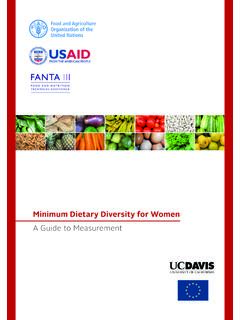Transcription of Gender stereotypes and their effect on young people
1 Gender stereotypes and their effect on young peopleGirls accounted for just 16% of students enrolled for a computing science degree in the UK in 2016 216%Boys account for 80% of permanent exclusions in England 480%87% of women asked (aged 11 21) think that women are judged more for their looks than ability 587%In the UK, women earn an average of 18% less than men 618%38% of dads lie to their boss to take time off work to spend with their children 738%1 C Egglestone, E Jones and F Aldridg. Understanding the Underrepresentation of women in Engineering Apprenticeships. Leicester: National Learning and Work Institute; 2018:10. Accessed 7 August Engineering UK.
2 Engineering UK 2017: The State of Engineering.; 2018:123. Accessed 7 August Summary Statistics for Schools in Scotland, No. 8: 2017 Edition. Published 2018. Accessed 7 August 2018. 4 National Tables. Published 2018. Accessed 24 August girl Guiding UK. Girls Attitudes Survey 2014. London: Girlguiding; 2014:13. Accessed 7 August 2018. 6 Office for National Statistics. Annual Survey of Hours and Earnings: 2017 provisional and 2016 revised results; J Olchawski. Parents, Work And Care: Striking the Balance. London: Fawcett Society; 2016 7% of engineering modern apprenticeships in the UK were filled by girls in 2016 17%Only 10% of primary school teachers in Scotland are men 3 10%What are Gender stereotypes ?
3 A Gender stereotype is a widely held belief or generalisation about the behaviours and characteristics attributed to women and men. Females are often portrayed as being emotional, caring and in need of protection. Males are often characterised as being rational, career driven and strong. These assumptions can be negative (eg women are irrational, men are insensitive) or seemingly benign (eg women are nurturing, men are leaders). However, all stereotyping can be do Gender stereotypes come from? Gender stereotypes are complex and originate from local culture and traditions. Children learn what constitutes female and male behaviour from their family and friends, the media and institutions including schools and religious bodies.
4 Gender stereotypes can have an adverse effect on all genders, as young people find themselves regularly exposed to messages about how boys and girls should look, behave and play. These socially accepted and often unconscious ideas start to form in are the negative impacts of Gender stereotypes ? Gender stereotypes shape self-perception, attitudes to relationships and influence participation in the world of work. In a school environment, they can affect a young person s classroom experience, academic performance, subject choice and well-being. The assumptions we make about boys and girls may be conscious or unconscious and can result in students being treated differently or offered different opportunities based on their and unconscious bias Gender stereotyping results from unconscious biases held by all of us.
5 Unconscious bias happens when our subconscious makes assumptions about people based on their background or perceived has unconscious biases. An individual can be unconsciously influenced by a stereotype even if they do not rationally subscribe to it. Becoming aware of our biases and working to counter them is an important way to combat the negative effects of Gender bias arises because we have to process vast amounts of information every second. In order to avoid being overwhelmed, our brains have to make assumptions based on previous experience and find patterns to speed up decision , these assumptions tend to be based on simple characterisations of people such as their age, race or Gender .
6 They are communicated through micro-messages such as body language and choice of words. This is more likely to happen when we are stressed or tired, and can cause problems by affecting our beliefs and treatment of admitting and dealing with our own biases can be challenging, it is important to identify, reflect on and even discuss them with bias in the classroomIn the classroom, unconscious bias can manifest itself in teacher learner interactions. For example, teachers may be more likely to praise girls for being well behaved, while boys are more likely to be praised for their ideas and A disruptive girl may be treated differently to a boy who exhibits similar behaviour.
7 These expectations can be harmful to both groups. Girls may learn to be compliant and not take risks, while boys may opt out of education if understanding does not come you aware of your own unconscious biases? Take the Harvard Implicit Association test to discover your unconscious preferences For information and advice read Case studies: Countering Gender stereotypes in schools and early years education Hilary Lips, A New Psychology of women : Gender , Culture, and Ethnicity, 4th Edition (Waveland Press, 2016), D Reay, (2001). Spice Girls , Nice Girls , Girlies , and Tomboys : Gender discourses, girls cultures and femininities in the primary classroom.
8 Gender and Education, 13(2), 153 and girls are just is more variance within groups of boys and within groups of girls, than there is between boys and girls. Gender differences are learned, not s unfair to do something just for girls or group should not be preferentially treated compared to any other group. However, if one group is being disadvantaged, then positive action should be taken. For example, if a lunchtime languages club only attracts girls, the organiser could consider ways to encourage boys to pupils know they are free to choose any subjects they want. Unconscious bias and normalisation of stereotypes means that there are often unspoken barriers.
9 Simply informing students that they are free to choose, without addressing these barriers, is not common misconceptions We can just run an annual girls into science event with lots of female role models. One-off activities or interventions do not have a lasting impact. They need to be part of a wider strategy. Role models can have a positive impact, but usually only where there is an ongoing relationship. We need more women physics teacher s Gender does not have a large influence on subject choice. The majority of students respond to good teaching, irrespective of whether the teacher is male or female. A lesson on the science of make-up will encourage girls to take an interest.
10 Attempts to make a subject more appealing by reinforcing a stereotype are unlikely to be effective. Make-up, for example, may appeal to some girls, but will make others feel patronised and will deter most more information, references and further reading, please visit information in this booklet was adapted from action guides developed as part of the Improving Gender Balance (IGB) Project. The IGB Project aims to support schools to understand Gender stereotyping and its impact. We work with teaching staff, support staff, and senior leaders across early learning and childcare centres (ELCs), primary schools, and secondary schools.






